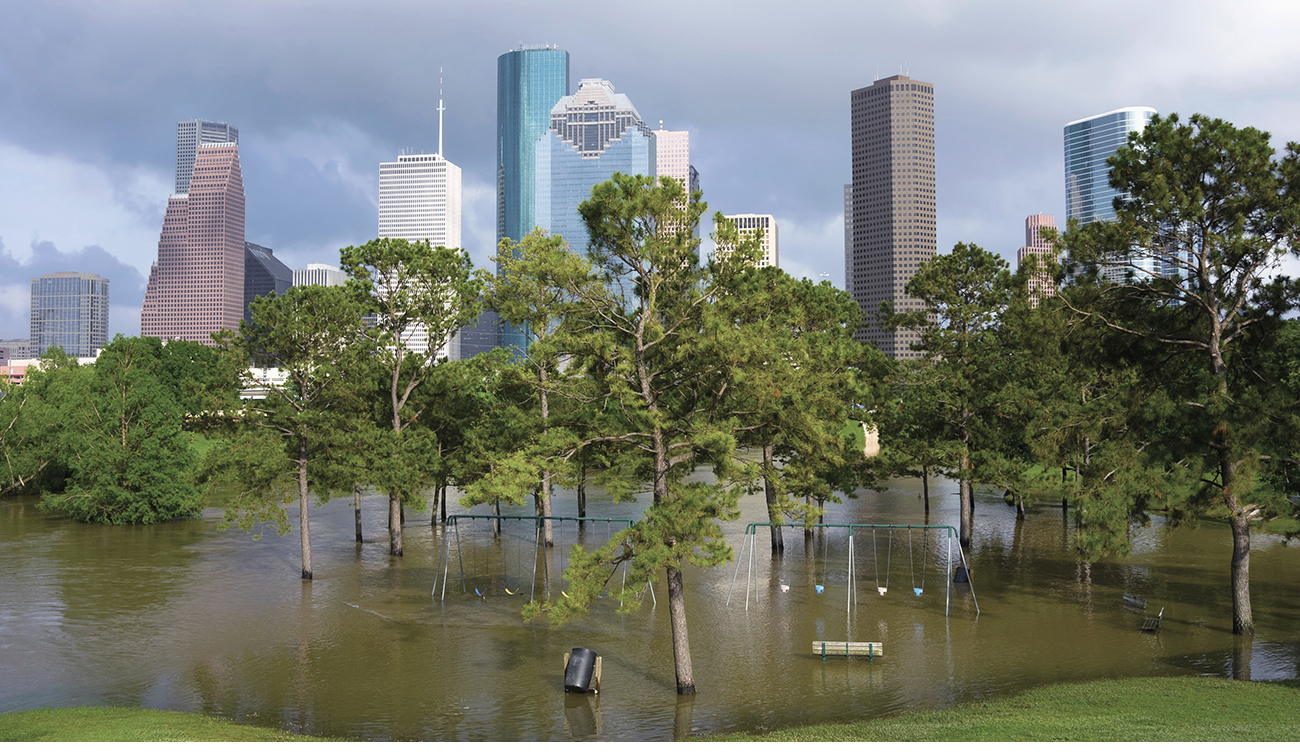Multidisciplinary initiative yields forecasts of more Houston floods

Steven Quiring
Extreme rainfall events in Houston like the April 18, 2016 deluge will become more frequent in the future according to research conducted by two Texas A&M graduate geography students conducted for the [Resilience and Climate Change Cooperative Project] (https://www.islandpress.org/blog/coastal-triple-threat-natural-hazards) , an initiative that is spurring collaboration among Texas A&M College of Architecture researchers and their counterparts in several disciplines.
R3CP researchers are investigating how the “triple threat” associated with climate change — inland flooding, hurricane storm surge and anticipated seal-level rise — imperils the Sims Bayou watershed, an urban area in south Houston.
In the rainfall study, students examined weather, population, economic development, and greenhouse gas and aerosol emissions data compiled by the [Intergovernmental Panel on Climate Change] (http://www.ipcc.ch) , an international body that provides policymakers with regular assessments of the scientific basis of climate change, its impacts and future risks, and options for adaptation and mitigation.
“Students found that in addition to facing more frequent flooding from extreme rainfall events, Houston will see less annual precipitation due to a higher number of days each year without rain,” said Steven Quiring, an associate professor of geography at Texas A&M who advised graduate geography students Yue Wang and Xiao Li on their project.
Because the analysis is part of the larger R3CP collaboration, the students shared their findings with the group’s faculty and student researchers in urban planning, landscape architecture, hydrology, epidemiology, sociology, public policy and geography.
The collaboration, said Quiring, is an example of what’s exciting about R3CP.
“The findings regarding rainfall are significant,” he said, “but they become more tangible and actionable when researchers in other disciplines also use them to inform their projects.” For example, an engineering student is using the rainfall findings to calculate new flood plain boundaries for Houston’s Sims Bayou watershed.
“If people hear there’s going to be more extreme precipitation, they might ask, ‘so what?’” said Quiring. “But if they learn, after new flood plain boundaries are established with the rainfall findings, that their house is now at a higher risk of flooding, which could lead to a loss of life or property, and that their insurance is going to rise dramatically in the next 20 years, people are much more likely to pay attention.”
Planners can also use the data, he said, to help a community shape its future by preparing for catastrophic downpours and channeling further development to reduce flooding. Landscape architects, he added can also use the data to identify flood-prone areas and create designs to mitigate flooding.
Additional R3CP projects include an ongoing partnership with students at Furr High School, who are gathering local environmental data along Sims Bayou with assistance from Texas A&M urban planning and School of Public Health faculty and graduate students.
In another R3CP study, urban planning professors Philip Berke and Galen Newman investigated flooding and pollution problems in the Sims Bayou watershed.
Their research identified people and structures in the watershed vulnerable to flooding and sea level rise and compared those findings to flood vulnerability in other parts of the city. This, they said, will be the first step in helping people who live in the watershed understand the social and physical context in which a disaster occurs.
The group of faculty and student researchers across campus participating in R3CP projects meets every two weeks to present their projects, share data, compare ideas, and discuss future collaborations.
The R3CP is focusing on environmental issues, one of the five areas that comprise the university’s Grand Challenges. Other challenges in the faculty-led, faculty-driven initiative include discovering ways to enrich youth's classroom learning, improve people's health, feed the world and expand the economy.
Tags
- climate
- coastal systems
- enviro gallery
- feature
- hrrc
- institute for sustainable communities
- interdisciplinary
- landscape architecture & urban planning
- laup gallery
- outreach
- partnerships
- planning
- research
- research gallery
- rss
- sustainability
- texas target communities
- ttc
- urban systems
Related Posts

Texas A&M research transforming urban school, community

College community responds to Harvey

Museum showcases HRRC-developed housing program
Follow Us
Facebook Twitter Vimeo Youtube Flickr RSS
Recent Posts

Planning prof heads study of disaster housing aid

A message from the dean

Former student remembered as expert planner

Leading educator named new head of Architecture Dept.







_thumbnail_small.png)
